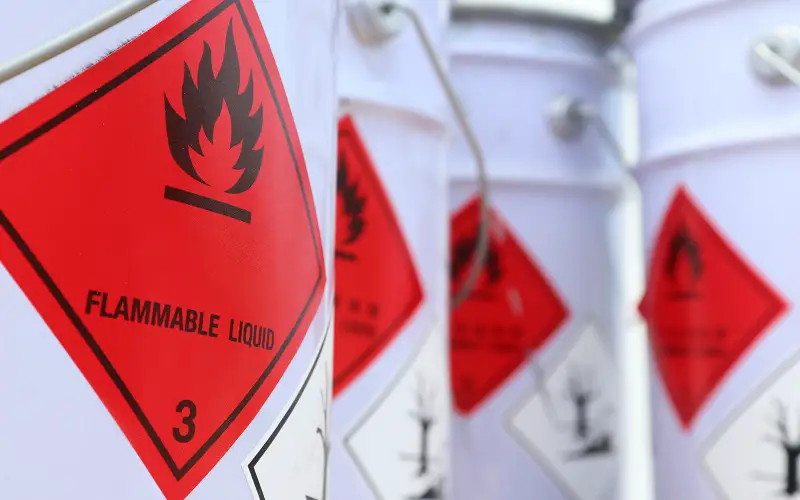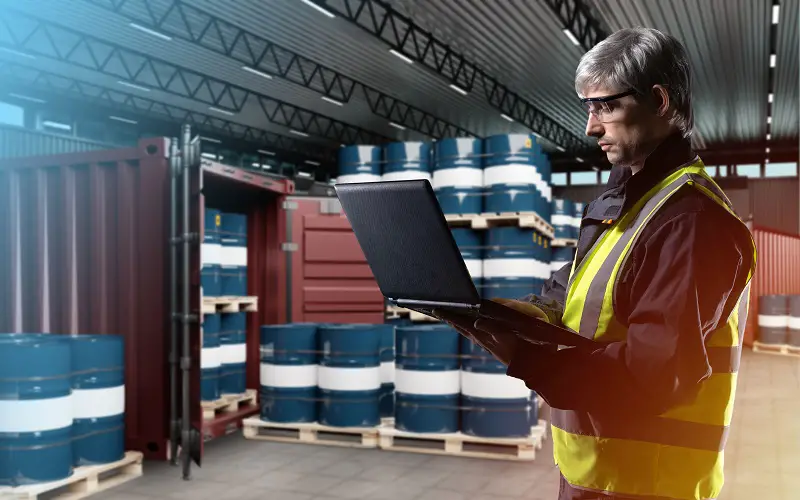Shipping hazardous materials is a complicated process. It can be intimidating to know how to package and ship these items correctly. The last thing you want is to send something hazardous by mistake.
Hence, if you do your job correctly, it’ll be safer for everyone involved. However, there are also many ways to ensure that your shipments are safe and compliant with the law. Here are five practices for shipping hazardous materials safely.
1. Use Hazardous Material Shipping Containers
When shipping hazardous materials, it’s essential to take every precaution to ensure safety. There are many types of hazardous material shipping containers, each designed for a specific kind of danger.
There are containers for flammable liquids, corrosive substances and radioactive materials. No matter what you need to ship, a container is specifically designed for it.
When you use the right container, your shipment will arrive safely at its destination. The container will protect the contents from external danger, such as fires, leaks or spills. This way, you don’t have to worry about the safety of the people handling your shipment.
2. Pay Attention To Labels and Markings
Have you ever wondered what all those strange symbols and markings on shipping containers mean? Shipping hazardous materials can be dangerous, so learning the labels and markings on containers to ensure safe shipment is essential.
You should be aware of three main types of hazard symbols: danger, warning and caution. Danger symbols indicate an immediate hazard that will result in death or severe injury if not avoided.
Warning symbols indicate a potential threat that could cause death or severe harm if not avoided. Lastly, caution symbols indicate a potential hazard that could result in minor or moderate injury if not avoided. By paying attention to these details, you can help ensure that everyone stays safe.
3. Develop An Emergency Response Plan

Developing an emergency response plan is essential for companies that ship hazardous materials. In an accident, the procedure can help ensure the safety of employees, customers and the general public.
The first step in developing a plan is identifying the hazards associated with the shipped materials. Next, establish procedures for responding to different types of accidents. It may include evacuating employees, alerting emergency services and containment procedures.
Designating a person or team to coordinate the response effort is also important. Once the plan is in place, it’s essential to review and update it as necessary according to your needs.
4. Avoid Overpacking Or Overstacking
One of the most important things to remember when shipping hazardous materials is to avoid overpacking or overstacking. Overpacking means putting too much material in one container, while overstacking means packing containers one above the other too high. Both can lead to serious problems, including leaks, spills and fires.
When packing hazardous materials (HazMat), always use the proper number and size of containers for the amount of material to be shipped. It’s also important to leave enough space between containers so that if one leaks, it won’t contaminate other packages.
Follow these simple guidelines, and you can help ensure that your HazMat shipment arrives safely at its destination.
5. Understand The Hazard Classifications
Anyone who manages logistics regularly must thoroughly understand the hazard classifications. The United Nations established nine classifications to ensure that hazardous materials are correctly labeled and shipped to minimise the risks posed to people and the environment.
Class 1 is for explosives which are materials that can detonate or violently combust under certain circumstances. Class 2 is for gases, which are compressed materials that can be harmful if inhaled. Class 3 is for flammable liquids which are materials that can catch fire and burn at a temperature below 100 degrees Fahrenheit.
Class 4 is for flammable solids which are materials that can catch fire and burn at a temperature above 100 degrees Fahrenheit. Class 5 is for oxidizing agents which are materials that contribute to the combustion of other materials. Class 6 is for poisonous materials which can be fatal if ingested or inhaled.
Class 7 is for radioactive materials which emit dangerous radiation. Class 8 is for corrosive materials which can cause tissue damage if they come into contact with the skin or eyes. Finally, Class 9 is for miscellaneous hazardous materials which don’t fit into the other eight classes. By understanding all nine hazard classifications, you can ensure that you ship hazardous materials safely and effectively.
Takeaway
When shipping hazardous materials, it’s essential to follow all applicable regulations. This includes understanding the hazard classes, proper labeling and packaging of the shipment and developing an emergency response plan. By taking these precautions, you can help ensure the safety of your employees, customers and the general public.




